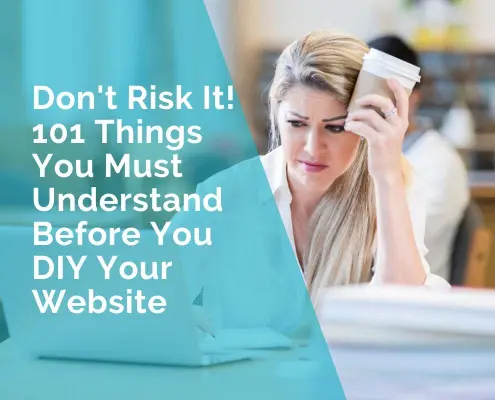Designing E-Commerce Websites with Financial Security in Mind
Modern shoppers nowadays flock online for a spot of retail therapy. While in-person shopping is still popular, it’s getting harder to compete with the flexibility that shopping online brings to customers.
Around 2.7 billion people are expected to be shopping online this year, which is a major leap from the 1.66 billion people online shopping in 2016.
How do you ensure financial security for those looking to set up an e-commerce business in 2024? The process of designing an e-commerce website should be detailed and thorough.
This guide will explain the importance of security when designing your e-commerce site and how to keep it secure so that your customers are able to shop freely without concern.
Table of contents
E-commerce website design for customer trust and security
How to design e-commerce websites for financial security
- Fraud prevention platforms
- Are your servers secure?
- Recognizable trust seals
- Create an ‘About Us’ page
- What kills your UX?
- Product reviews
Future security risks for e-commerce websites
Be mindful of financial security when designing your e-commerce site
E-commerce website design for customer trust and security
It’s important that your e-commerce website design is trustworthy. When a shopper first enters the site, they’re going to have their guard up for the most part. The design of your website is influential in helping lower that guard.
If the website doesn’t look trustworthy, then the user will simply click off the site in search of another option. Shoppers are concerned nowadays with how their data is used and how secure their private information is when exchanging it with online stores.
Therefore, it’s essential you’re designing with financial security in mind. Creating a website design that looks professional and trustworthy will help in leveraging conversions. The more users that consider themselves to look safe in their appearance, the more checkouts you’re likely to see occur.
How to design e-commerce websites for financial security
So how do you go about designing e-commerce websites for financial security? There are a number of tips that will help ensure your e-commerce site is set up and designed so users feel safe shopping.
Check your server’s security
When designing an e-commerce site for financial security, your servers play a big part in keeping it all secure.
Server security involves an assortment of policies and practices that are designed to protect your server from all types of threats. There are a number of measures that you could take as a business when designing and maintaining your ecommerce site to ensure your servers aren’t compromised.
These best practices include:
- Installing and maintaining firewalls
- Staff training on cybersecurity
- Enforcing strong passwords across the company to prevent unauthorized access and ensure security by eliminating the risks associated with blank space copy and paste.
- User authentication protocols
- Internet usage policies
The more you do to protect your servers, the less likely your ecommerce site is going to fall victim to an attack.
Use recognisable trust seals
In the process of designing your site, you should be implementing features that generate trust in your site. Trust seals are useful to add to your site’s design because they reassure the user when they come onto the site. With a trust seal like any of the ones below, it reaffirms the legitimacy of your site.
Recognizable trust seals are something many users online will notice and therefore will likely boost e-commerce conversions. For some users, it’s the difference between making a sale or having them click off at the last minute.
If you’re unfamiliar with trust seals, take a look at some of your competitor’s websites or ecommerce sites you’re taking inspiration from. You’ll be able to distinguish quickly which ones are used more regularly.
Leverage third party platforms
Prevention is a better attitude to have when it comes to securing your website from harm. When designing your e-commerce website, you should look to implement a platform to prevent fraud.
Online businesses face many challenges due to fraud. There’s a risk of reputational damage if fraudulent activity occurs. Repairing that damage takes a lot of strain on your resources and for some, unsalvagable. E-commerce companies are estimated to lose around $48 billion to fraud each year, which is devastating for some businesses online.
A fraud prevention service like SEON’s platform, for example, is a great way to secure your site, while focusing on the growth and scaling up of the business.
It is helpful to stop fraud in its tracks before it even occurs. With online fraud expected to increase by over 140% in the next five years, fraud prevention software is worth investing your money in.
Create an ‘About Us’ page
An ‘About Us’ page is useful when designing any website because it provides an overview of your company to those new users who’ve never come across you until now.
This overview page is a knowledge hub for those who are curious about your business and might want to scour over prior before buying. That makes it an influential page to work on when designing your site. A few considerations when creating this page include:
- General information
- Photos of team members or founders
- Links to social media
- Contact information
You should also look to include shipping and returns policies so that they’re clear from the onset for your customers. An FAQs section is also helpful to add so that you reduce the number of repetitive queries your customer support agents get on a daily basis.
Look at the user experience
As part of the design undertaking, user experience should be part of your thought process. Avoiding UX-killing mistakes is important. Not only does it make the site look unkept but it also damages trust with users navigating the site. The more broken links or typos they spot, the less likely they’re going to hit that all-important checkout button.
It’s crucial to go over every page and element of your site with a fine tooth comb. Ensure your system flags the backend team when links are broken or when 404 pages appear. Be a grammar wizard with tools like Grammarly to avoid spelling mistakes and careless typos.
Add product reviews
To ease the minds of your customers, you should showcase your product reviews with pride. Even if they’re not always a five-star rating, it shows authenticity on your site. A prospective customer will often see through fake reviews or judge a shopping platform that doesn’t have a lot of reviews for their products.
Showcasing product reviews is simple to do and should be easy to locate on the page. Be sure to respond to any product reviews too as this shows the users that you care about the customer’s experience on the site.
Future security risks and preventative measures to take
Out of the nearly 8 billion people in existence around the globe, 5.35 billion exist on the internet. Having that many people online does pose a security risk in itself because it attracts cybercriminals.
The rise in cybercrime is one to consider when setting up your e-commerce site. It’s important to understand what security risks are present for your site but also for your customers. Cybercrime activity is evolving too, so it’s useful to know what future security risks might be in the works.
- Artificial intelligence
- Attacks on IoT
- Skimming
- Compromised payment gateways
- Credit card fraud
There are many ways in which you could be proactive in protecting your eCommerce site. These include:
Embracing technological advancements
Don’t shy away from the technological advancements being made because these might just be the solution to securing your site from harm. Embrace artificial and blockchain technology. Look at what’s new in the world of e-commerce security and consider its benefits for your own business.
Educate your workforce and your customers
Educating your workforce on how to prevent cybercrime within the business is useful. There are plenty of courses and training available through IT services like Meritec that you should look to invest a budget into.
The same goes for your customers when shopping online, particularly on your site. Provide guides and useful information on how to avoid falling victim to a scam or fraud attempt.
Actively hunt for new threats
Be proactive when hunting for new threats as a business. It’s important not to simply sit there and wait to be attacked. Looking out for new threats or using platforms to stop attacks before they happen is better than it is too late.
Conduct regular security audits
Don’t forget to conduct regular security audits. Once you’ve designed your e-commerce site, it’s always good to review its security protocols and measures in order to identify any vulnerabilities.
Be mindful of financial security when designing your e-commerce site
A well-thought-out, user experience design is paramount to gripping the attention of the user, especially when stepping their digital footprint onto your website for the first time.
Online shoppers want a frictionless experience when browsing e-commerce sites and yours should be no different. When designing your e-commerce site, be mindful of what experience you’re creating for your customers and how to protect their navigation from the first landing page to checkout.
***
Author Bio: Natalie Griffiths (LinkedIn)
Natalie is a freelance writer with five years of experience in copywriting for businesses, spanning many industries.












